Wooden kitchen countertop maintenance
A wooden kitchen worktop does not break down with use. Damage to the surface occurs due to the daily actions it is subjected to because it is still a worktop. It can stain, scratch, change its appearance from a new worktop, but it can still be used without any problems. We get scared that wood won't stand up to the abuse and go for chipboard or harder materials like walnut or stone, forgetting that in the past it was all wood in the kitchen. Nobody was scared of spoiling the meal by placing the pot of soup directly on the wood, and turning the dumpling directly onto the weathered wood of the table was common practice. So, if you like wood, use a wooden countertop in your kitchen with confidence. Indeed, compared to other materials, wood needs a little more care. But at the same time, if flaws occur they can be fixed much more easily and without much cost compared to other materials.
A kitchen worktop can be made of timber or solid wood panels
To the untrained eye, the wood of a countertop may look like just a slab available in various colors, but that's the beauty of finding the perfect piece so that the end result is aesthetically pleasing. Luckily, we now have more and more kitchen worktop options in different wood species. I'm not saying we should change our kitchen worktops at the same rate as new products are coming out, but there is a choice of oak, beech, walnut, fir, ash or cherry.
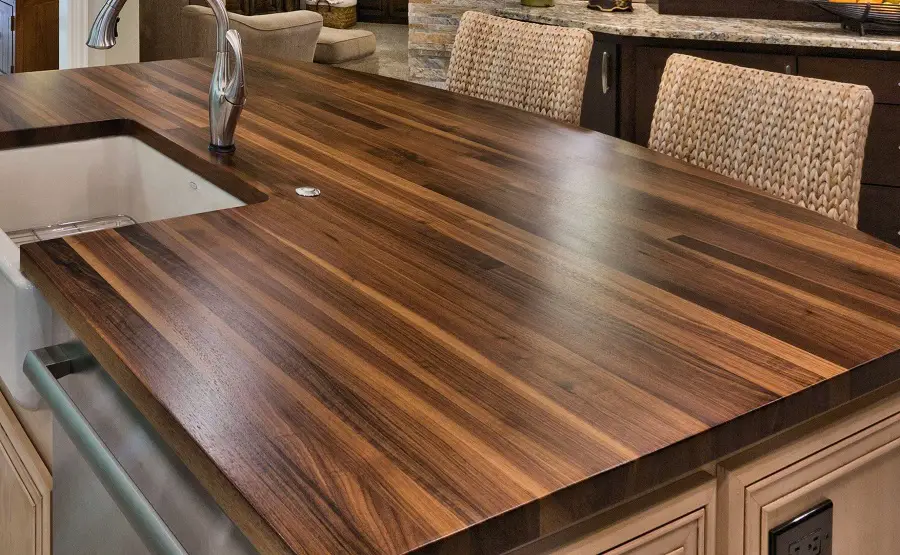
Just like large cupboard doors or bed tops, table tops can be made from several pieces of timber. Generally, the pieces of lumber are glued together. But it is also possible to glue each plank separately (nailed together, as in the past) or to make removable joints.
Another option, much simpler and safer in terms of behaviour over time, is to use ready-made wooden panels. These are industrial products made from timber that have several advantages:
- the panel can be cut and trimmed to design, resulting in a complete countertop with space for a sink, hob or prize
- does not warp or crack during use
- can be finished or treated like any wooden countertop
- there are countertops of various hard essences: beech, oak, ash, cherry, fir
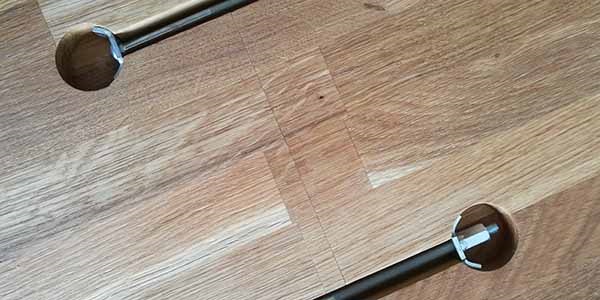
Maintenance of wooden kitchen worktop depending on the material with which it was finished
A wooden kitchen worktop can be finished with varnish, wax or oil.
Lacquer finish is made with varnishes resistant to moisture and mechanical and thermal aggressions possible in a kitchen. Chemical hardening varnishes, known for their high resistance, are generally used. Even these varnishes have their limits. Don't imagine that you will be able to cut directly with a knife on such a countertop without leaving marks. You'll still need to use a chopper to cut meat or vegetables, and take care that water doesn't puddle around the sink so that it doesn't reach the wood through less protected areas.
Strictly from the point of view of wood protection, varnishes are preferable, but not when it comes to remedying defects that have occurred during logging. If it has been scratched or water has got under it, the varnish layer should be removed and the finish redone. And this is a difficult process to do on a countertop that has already been installed.
Wax finishing. The second finish iswax. Provides good protection against moisture, but very weak against mechanical action and high temperatures. Application is simple and natural products (beeswax, carnauba wax) can be used. In my opinion, wax is not a good option for a kitchen worktop because of its low resistance to high temperatures. Every time a hot - not necessarily hot - object is placed on the countertop, the wax will soften and get on the object. This causes the protective layer to wash away, lowering the protection. In order to keep the protection as good as possible, the top coat needs to be re-done very often.
Oil finishing is, in my opinion, the best option for wooden countertops, especially if it's hardwood countertops. Oil penetrates deep into the wood and protects it from moisture without forming a film. Hot objects on the worktop don't bother because there is no film. Natural oils can be used, so you benefit from an eco-finished wooden worktop.
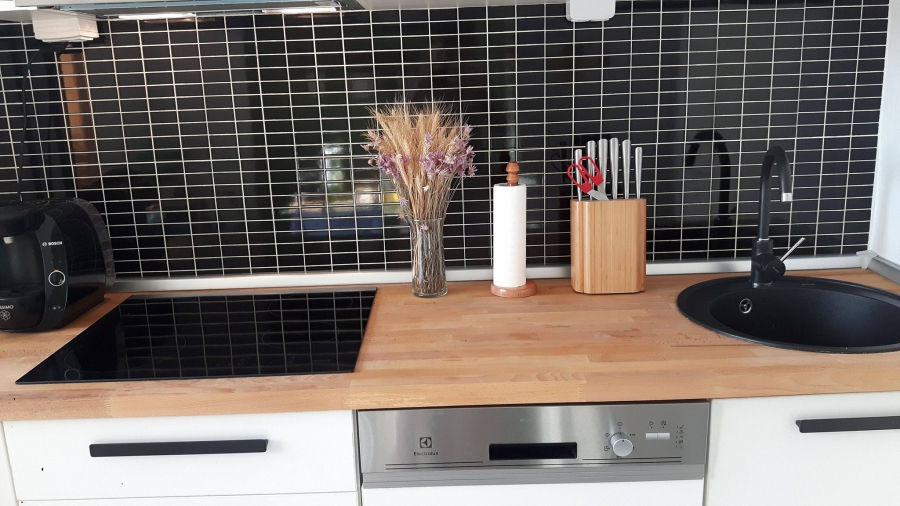
Repairing defects on a wooden worktop is very simple
But the biggest advantage is how to fix faults when they occur. I know, you'll say: if the advantage is that you fix defects easily, how is that the best option? Why do defects still occur? Isn't the better option the one that ensures that defects don't occur? It would be, if it existed. Every variant, no matter how vaunted, has instructions for use to avoid defects. Only 2 examples I give:
- Melamine chipboard - you're not allowed to cut directly on it, just as you're not allowed to cut on a wooden worktop. But if you have scratched it, such a worktop will be much harder to repair. If it is sufficient to remove a 1 mm surface layer on a wooden worktop to get to clean wood, this is impossible on a melamine chipboard worktop.
- stone, marble - are much tougher, but the same recommendation not to cut directly on them applies. In addition, they stain very quickly with coloured liquids. And sanding granite or marble is much more difficult than sanding wood.
Repairing scratches or marks on a wooden worktop is done by lightly sanding the worktop with 120-180 grit sandpaper applying even pressure. Once the scratch is gone, wipe off the resulting dust and apply an oil to restore the finish and protective coating.
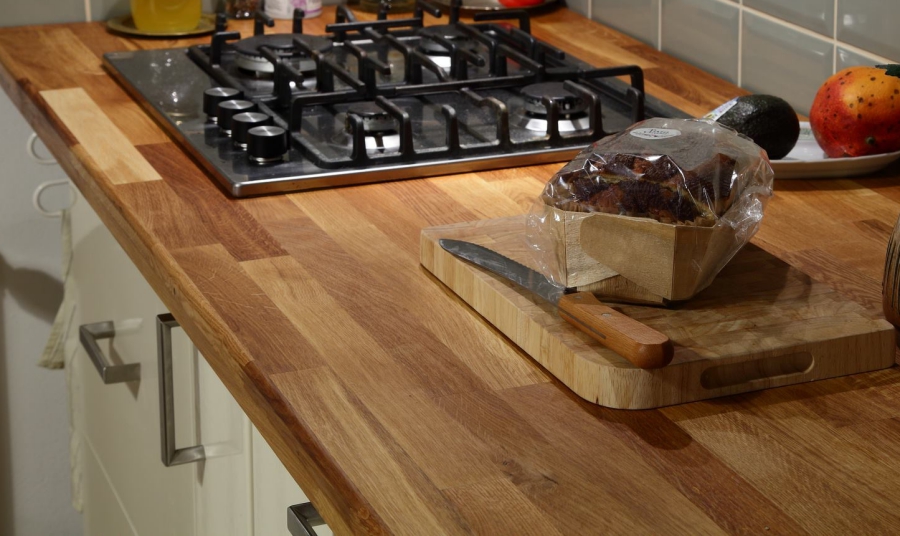
How to maintain a wooden kitchen worktop
Think of a wood chipper. No good if it's scratched? Does it bother you that repeated use and washing has changed its colour? I'm sure it doesn't. It's just that we want a neat, clean, stain-free kitchen countertop. What can we do? Here are some ideas:
- Do not cut directly on the kitchen counter. Use a separate wooden chopper to chop vegetables or meat.
- Any coloured or uncoloured liquids should be wiped off immediately, otherwise stains may appear.
- Avoid placing very hot objects directly on a wooden worktop. Put them on a chopper.
- Don't let the water puddle, especially near areas where work has been done (near sinks, sinks, sockets). Water can get into less protected areas, soak into the wood and mould can develop.
- Do not use wire sponges to clean the wooden surface, nor very aggressive or scratching detergents. This will damage the finish (whether varnish, oil or wax) and leave the wood exposed.
- If you have oiled or waxed wood countertops, refresh the finish from time to time. It's simple, you can do it with a cloth, just like wiping the surface.
Maintenance of oiled wood kitchen worktop - video
We said that unlike other types of countertops, a wooden kitchen countertop can be maintained very easily. Especially if it is oiled. Look how easy it is to do!























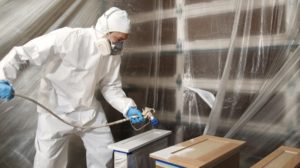
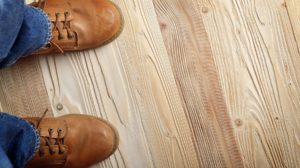
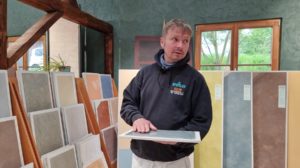

Add comment